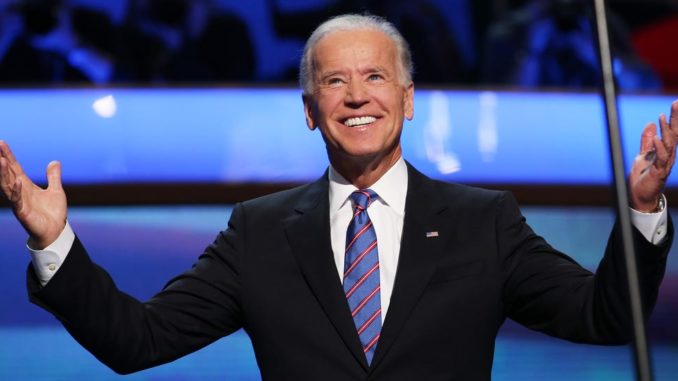
FDR, LBJ, and JRB?
Biden’s Progressive Reset for the 21st Century.
By Patrick Sprinkle
Following the defeat of Hubert H. Humphrey in 1968 liberalism was on the ropes. Stymied by the costs of the Vietnam War, civil unrest, and growing inflation, the Roosevelt coalition of Southern Democrats, Northern union liberals, and historically marginalized communities was permanently fractured on the issues of civil rights and a culturally changing America. The Nixonian message of “law and order” and “states’ rights” attracted Southerners and suburban whites who looked to the Republican Party as an antidote to eight years of consecutive Democratic Party rule of the White House. Voters doubled down by not only re-electing President Richard Nixon, reaffirming his “southern strategy,” but continued the rightward lurch over the next fifty years with two-term Presidents Ronald Reagan and George W. Bush.
In response to the moderating attitudes of the country, Democrats themselves evolved. Moving from the party of George McGovern and Lyndon Johnson to a centrist approach to win over undecided and moderate voters. Nominating outsiders unwilling to see big government as a panacea to societal ills, such as President Jimmy Carter’s transfer authority of federal programs to state and local control in order to lower budget deficits, or explicitly promising “the era of big government is over”, as President Clinton declared in 1996, the Democratic Party demonstrated a recalcitrant approach to an expansive federal government. These Southern Presidents typify the strategy of Democrats through the 1970s, 1980s, and 1990s—fight for what currently exists, but do not expand the power of the federal government. While the Democratic Leadership Council’s moderate choice of President, Bill Clinton, was able to secure two terms in the White House it came at the expense of enhanced free trade, welfare reform, the Defense of Marriage Act, and a general unease to the role of the state, especially after the defeat of President Clinton’s health care proposal in 1993.
The 2008 Election of Barack Obama represented a turning point in the Democratic Party. While still holding some of the tenants of the last thirty years, notably his opposition to gay marriage, support of free trade, and increased support of market-based solutions to solve the American education crisis (Race to the Top), President Obama also pushed more progressive reforms. Additionally, labor allies were disappointed by the Obama’s administration to make the Employee Free-Choice Act a central goal of his administration. The American Recovery and Reinvestment Act dramatically increased spending, but despite unified government, Democrats failed to use the budget reconciliation process as a tool to go even bigger, as liberal economists implored. The Affordable Care Act, the greatest expansion of health care in the United States since Medicaid, signaled an increased role for the federal government, and most importantly reduced the percentage of Americans who do not have health care to 9.1%, their lowest levels in history within two years of the law being fully in effect. Even this achievement failed to include core liberal beliefs such as a public option which was dropped in order to win the support of Democratic Senator Joe Lieberman.
In spite of core achievements on health care and the economy, voters rejected Democrats in the 2010 Midterm Election, and President Obama failed to possess unified government for the rest of his presidency. The center, again, shifted right. Democrats threw away their shot to go big and bold in the Obama years. Many of the liberal achievements of the Obama years would be dismantled by the Trump administration and represent a stinging rebuke of center-left politics. President Trump, a populist in tone, became the de facto leader of the Republican Party who electrified voters, especially in the Rust Belt and across the Midwest, who were turned off by the incrementalism of the Democratic Party, and the failure to create structural reform. Despite his crudeness, hostility towards immigrants, and the toxic masculinity which typified his time in the Oval Office, President Trump may have created a voter realignment across the Midwest. Of the 206 counties that flipped from Obama to Trump, President Biden was only able to win back 25 in 2020, instead finding new Democratic voters across suburban America. Will these trends last? Time will tell.
Learning from the lessons of the Obama administration, and rejecting the DLC of his yesteryear, President Biden is the most experienced and the most progressive president of the last sixty years. With a razor thin majority in Congress, President Biden has embarked on the most ambitious stimulus since the New Deal and a hope to turnback the clock to a prior era. The American Rescue Plan seeks to transform the role of the federal government using tax credits and direct payments to working class families with children and holds the potential to cut child poverty in half. This program is two and a half times the size of the stimulus program proposed by President Obama in 2009, arguably an era with greater economic peril. Recently, Biden will announce a $4 trillion infrastructure and jobs package that will include the most labor-friendly policy in the United States since the Wagner Act, and investment in green jobs, public transit, and provide critical aid to some of most overlooked, care workers, including at nursing homes and daycares.
It appears that President Biden has learned the lesson of aiming small and instead harkens back to an era of a big, bold, and energetic federal government. By invoking his inner Franklin Delano Roosevelt and Lyndon Johnson, President Biden may finally steer Democrats away from centrism and towards a vision that will define the Democratic Party for a generation.
Patrick D. Sprinkle is a high school history and government teacher at the NYC Lab School for Collaborative Studies in Manhattan. Patrick lives in Jersey City, New Jersey with his wife, Melissa, and son and dogs, aptly named Franklin and Lyndon.